Blond Laboratory exhibition at Milan design week is a "celebration of process" says James Melia
Blond founder James Melia explains how the Blond Laboratory exhibition at Milan design week drew attention to the processes of industrial design in this video produced by Dezeen for the strategic design agency.
The Blond Laboratory exhibition tasked designers with creating designs in response to a collection of found everyday objects, curated by the Blond team.
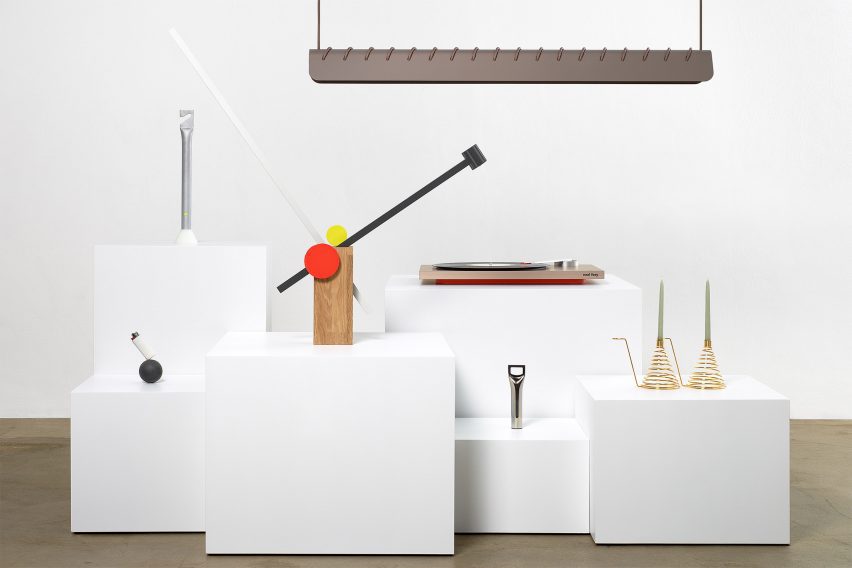
The final designs were exhibited alongside the objects that inspired them in a historic carpentry warehouse in Milan's Brera district. Objects and media that illustrated the design process were also on display.
According to Melia, the exhibition was created to illuminate the process of industrial design and encourage designers to find inspiration in the physical rather than digital realm.
"Often in exhibitions you see lots of final polished objects", said Melia in the exclusive video interview, which was shot by Dezeen in Milan.
"Very rarely the process of creating these objects is celebrated," he continued. "In essence, Blond Laboratory is a celebration of process."
Seven designers, including Melia, chose objects from a selection curated by Blond to use as a basis for a new piece.
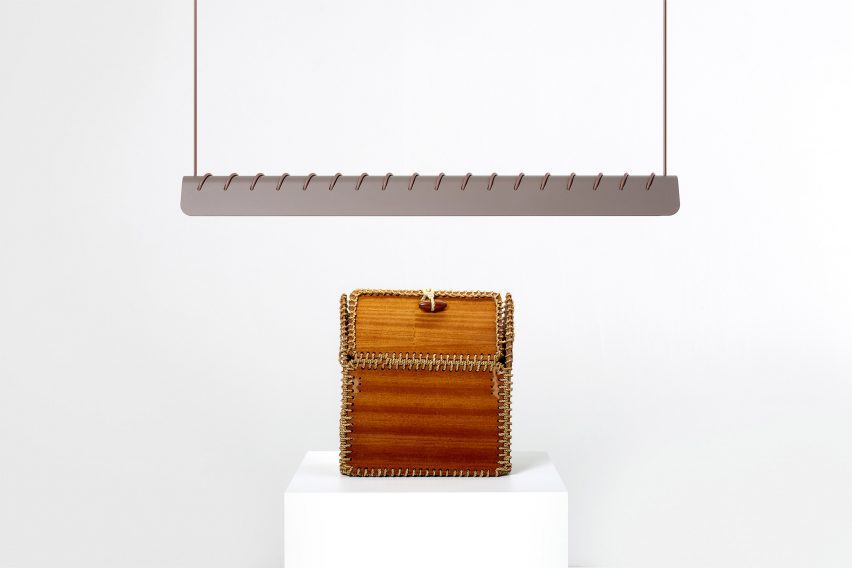
Other participants included John Tree, Pentagram's Jon Marshall, Julie Richoz, Sony Europe's Hirotaka Tako, Maddalena Casadei, and Form Us With Love.
Melia chose to reinterpret a wooden bag for the exhibition, creating a pendant light. The original object has large visible stitches that hold its elements together, reflected in the way that the lamp's wire has been woven across the top of its casing to hold the light source in place.
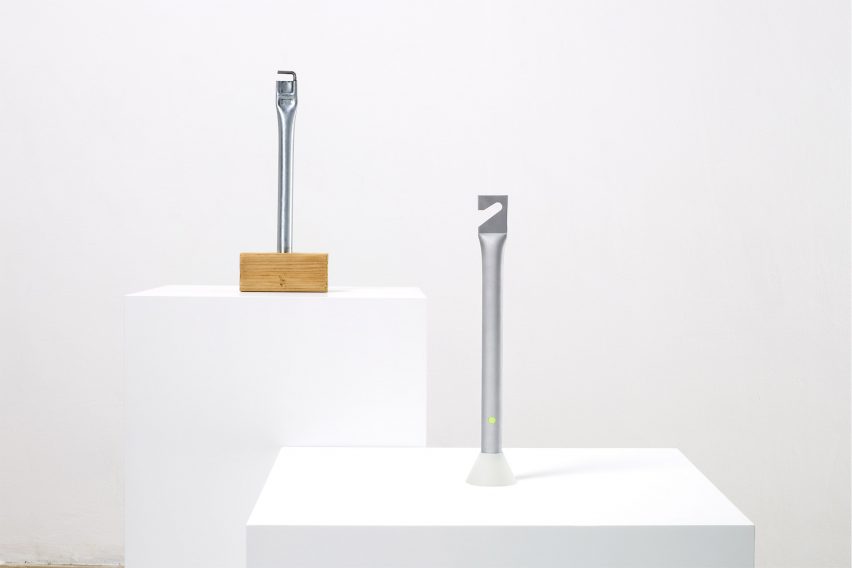
"We've created a pendant light that translates the aesthetic of the bag into a very modern piece of lighting," said Melia.
Casadei, a Milan-based designer, created a hangable torch for the exhibition, basing its form on a homemade mallet with a hook at the base of its handle.
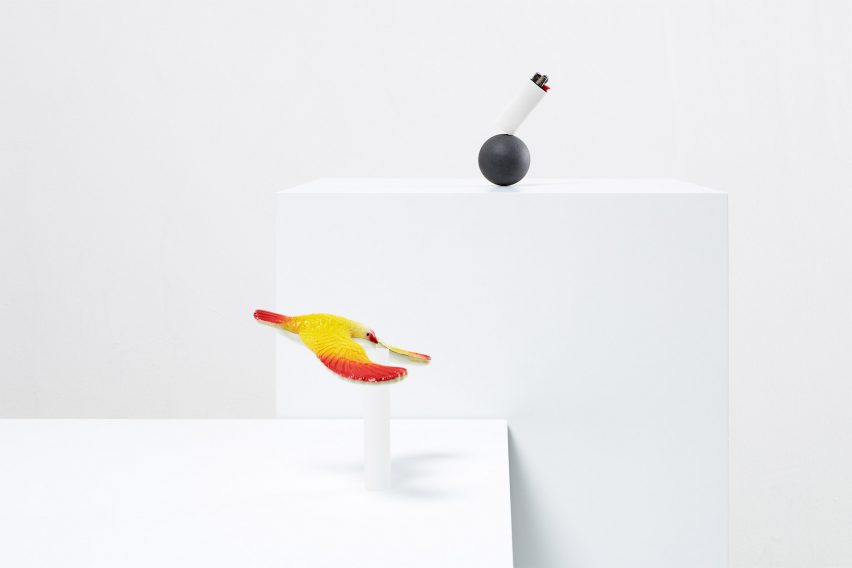
Swiss-French designer Richoz contributed a lighter that magnetically attaches to a spherical base. When attached, the piece can be wobbled back and forth on its base but is eventually restored by gravity to an upright position. She based her design on a plastic bird toy that balances on a surface at the point of its beak.
Tako, who is creative director and head of Design Centre Europe at Sony Europe, designed a lamp with a wooden base, long plastic arms and colourful circular controls, taking as its cue a wooden marking gauge with a headstock that slides up and down the implement.
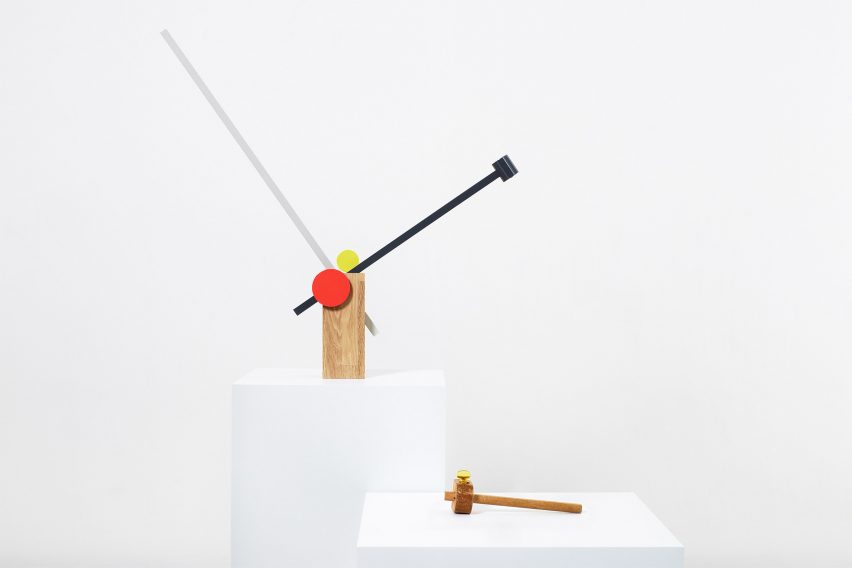
British designer John Tree based the design of his aluminium turntable with an infrared needle on the form of a wooden Japanese ladle with a long handle that bisects its scoop.
Stockholm-based design studio Form Us With Love chose a corkscrew made of a single bent wire as the basis for the design of a minimal bottle opener made from a crushed pipe.
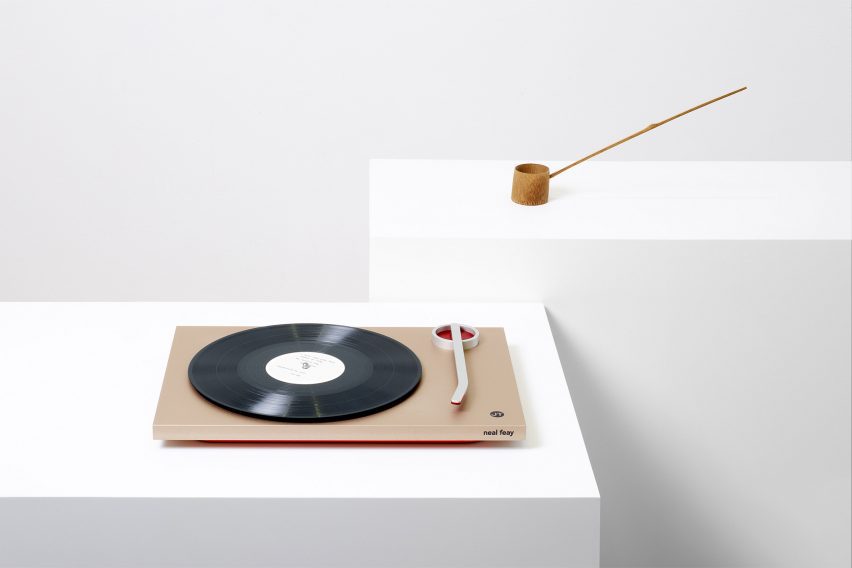
Pentagram's Jon Marshall contributed a candle holder with a base made of a golden spring wound into a conical form, closely mimicking the form of an old whisk.
Reflecting on the aims of the exhibition, Melia emphasised the importance of physical experimentation in the process of industrial design.
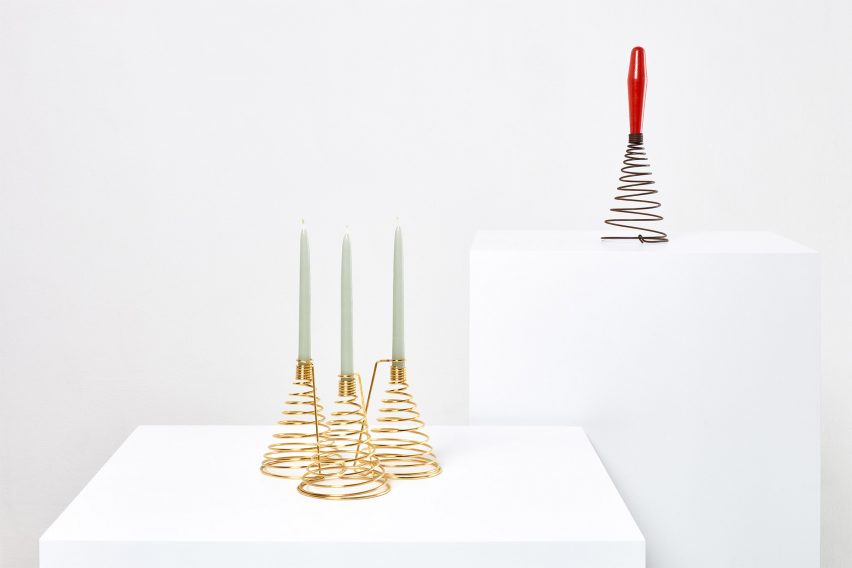
"I would like people to come away from the exhibition with a sense of joy for the industrial design process," he said.
"You're hammering, twisting, bending, cutting, and understanding how materials react. And it's within those moments that you can really fine-tune details and learn about the design that you're creating."
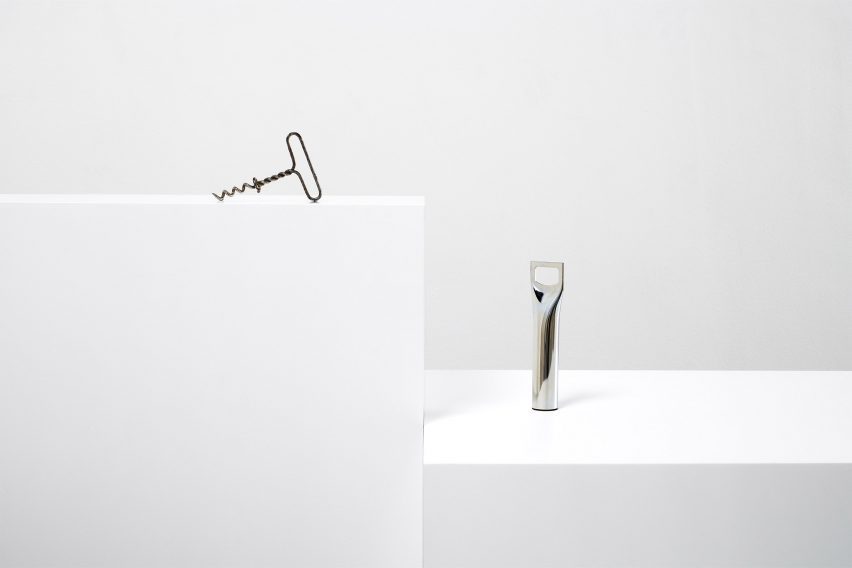
Blond Laboratory took place during Milan design week from 15 to 21 April 2024. See Dezeen Events Guide for an up-to-date list of architecture and design events taking place around the world.
Partnership content
This video was produced by Dezeen as part of a partnership with Blond. Find out more about Dezeen partnership content here.